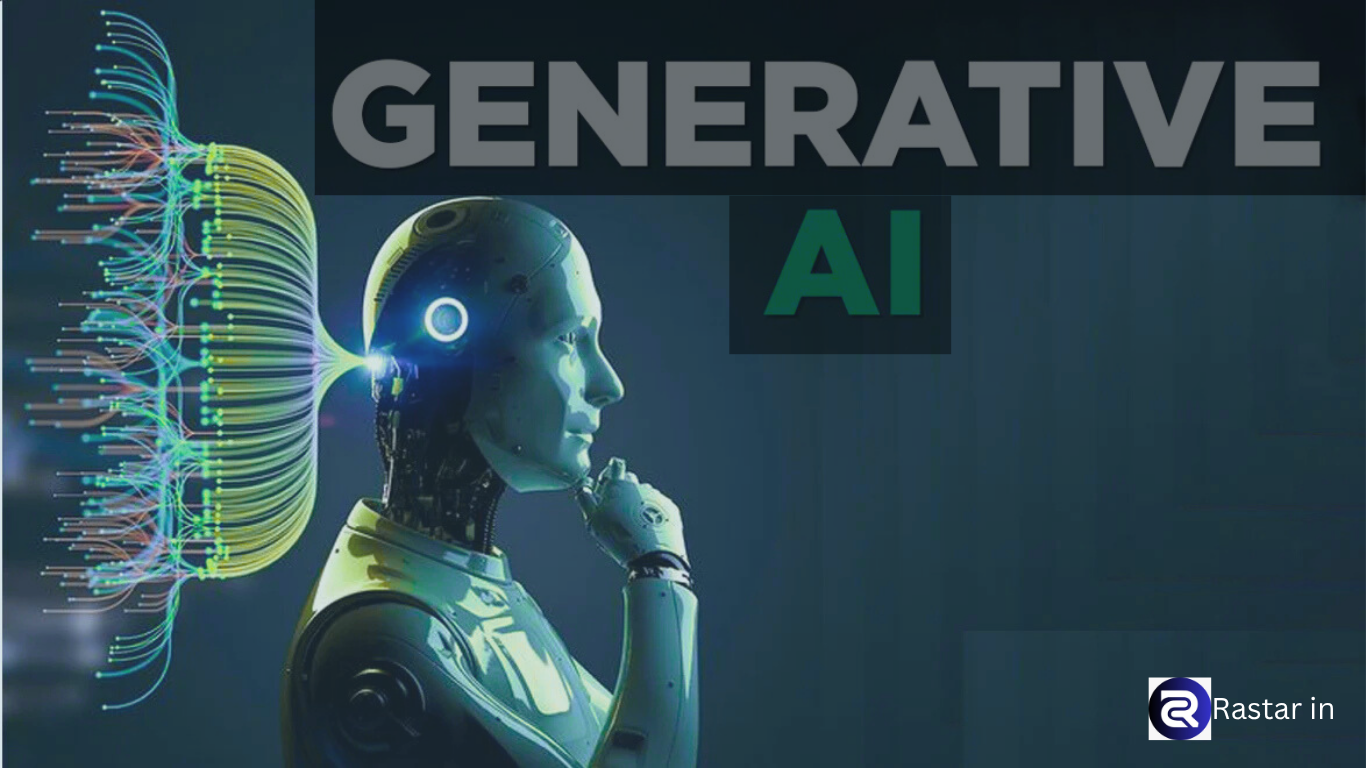Ever wondered what happens when your marketing team runs on fumes? The data’s pretty brutal: 73% of marketers report feeling creatively drained at least weekly. I’ve been there, staring at that blinking cursor, feeling like I’ve squeezed every last creative drop from my brain.
Generative AI isn’t just another buzzword—it’s the lifeline your content team desperately needs right now.
Think about it. What if you could produce twice the content in half the time, without that quality nosedive? What if brainstorming sessions actually produced ideas instead of just consuming coffee?
But here’s what most articles won’t tell you about implementing AI in your content workflow: the real magic isn’t in the technology itself. It’s in how you…
Table of Contents
Understanding Generative AI Fundamentals
What Makes AI “Generative”: Core Concepts Explained
Ever wondered what makes generative AI different from the AI that’s been around for decades? It’s pretty simple, actually.
Traditional AI systems follow rules and make decisions based on existing data. Generative AI creates new stuff.
Think of it this way: If regular AI is like a calculator solving math problems, generative AI is like an artist with a blank canvas. It doesn’t just find patterns—it makes brand new content that never existed before.
The secret sauce? These systems understand probability and context. They ask: “What word likely comes next?” or “What image element should go here?” a billion times until something new emerges.
The Evolution from Traditional AI to Generative Models
The journey from old-school AI to today’s generative models wasn’t overnight.
Early AI was all about explicit rules and logic. Remember those clunky chatbots with pre-written responses? That was rule-based AI at its finest.
Then machine learning showed up, and systems started figuring out patterns on their own instead of following rigid instructions.
But the real game-changer came with deep learning and neural networks. These mimicked how our brains work with interconnected layers that process information in increasingly complex ways.
Key Technologies Powering Today’s Generative Systems
The real workhorses behind generative AI are:
- Transformer Architecture: The breakthrough that revolutionized language models by handling relationships between words regardless of their position in text.
- GANs (Generative Adversarial Networks): Two neural networks competing against each other—one creates content, the other judges it—resulting in increasingly realistic outputs.
- Diffusion Models: These start with random noise and gradually refine it into coherent images by removing noise step-by-step.
- Foundation Models: Massive pre-trained systems that serve as the base for countless applications, fine-tuned for specific tasks.
How Generative AI Creates Original Content
The magic happens in four basic steps:
First, these systems consume massive datasets—billions of images, text documents, or sound files—learning patterns, styles, and structures.
Second, they build statistical models representing what they’ve learned about how content is structured.
Third, they use sampling techniques to generate new content, making probability-based choices at each step.
Finally, they apply constraints to keep the output realistic and coherent.
What’s mind-blowing is that the AI isn’t copying—it’s synthesizing. It doesn’t store examples; it stores patterns and relationships. When you ask it to create something, it’s building from those learned patterns, not stitching together pieces of the original training data.
Leading Generative AI Applications Transforming Industries
A. Content Creation and Creative Assistance Tools
The creative landscape has been completely flipped on its head. Writers staring at blank pages? That’s becoming a relic of the past. Tools like ChatGPT and Jasper are churning out blog posts, marketing copy, and creative stories in seconds.
But it’s not just about text. DALL-E, Midjourney, and Stable Diffusion are transforming visual creation. Need a hyper-realistic image of astronauts playing basketball on Mars? Done. Want to visualize your product concept before building a prototype? Easy.
Musicians aren’t left out either. Systems like AIVA and Amper Music compose original pieces across genres, while tools like Mubert create custom soundtracks for videos and games.
The real game-changer? These tools aren’t replacing creatives – they’re supercharging them. A designer can generate 50 concepts in minutes instead of days. A writer can overcome blocks by asking AI to suggest plot twists or character developments.
B. Code Generation and Software Development Acceleration
Coding has never been this accessible. GitHub Copilot and Amazon CodeWhisperer are like having a genius programmer sitting next to you, suggesting code completions and entire functions as you type.
The impact? Jaw-dropping productivity gains. Developers report completing tasks in minutes that previously took hours. Junior devs are coding like seniors, and senior devs are focusing on architecture while AI handles the repetitive stuff.
These tools understand multiple programming languages and can:
- Translate code between languages
- Explain complex code blocks in plain English
- Generate unit tests automatically
- Debug existing code and suggest fixes
C. Healthcare Innovations: From Drug Discovery to Personalized Medicine
AI is slashing drug development timelines from years to months. Companies like Insilico Medicine used generative AI to create a potential treatment for pulmonary fibrosis in just 18 months – a process that typically takes 3+ years.
Beyond drug discovery, these systems are personalizing patient care in ways we couldn’t imagine before. They analyze thousands of similar patient cases to predict treatment outcomes and suggest personalized approaches.
Radiologists now use generative models to enhance medical images, spotting anomalies human eyes might miss. Some systems can even generate synthetic medical data for research while preserving patient privacy.
The really exciting part? AI assistants that can explain complex medical conditions to patients in simple language, dramatically improving understanding and compliance with treatment plans.
D. Financial Services: Risk Analysis and Automated Advisors
Banks and investment firms are using generative AI to revolutionize how they assess risk. These systems analyze patterns across millions of transactions to spot fraud in real-time and predict market movements with uncanny accuracy.
Robo-advisors have evolved from simple algorithm-based tools to sophisticated systems that can explain investment strategies in conversational language. They create personalized financial plans based on your goals, risk tolerance, and life circumstances – all without human bias.
Insurance companies are using generative models to simulate thousands of disaster scenarios, helping them price policies more accurately and prepare for climate-related risks.
The technology is also democratizing financial literacy. AI-powered tools can simplify complex financial concepts, generate personalized budgets, and even negotiate with creditors on your behalf.
E. Manufacturing and Design Process Optimization
In factories and design studios, generative AI is creating a quiet revolution. Engineers feed design parameters into systems like Autodesk’s generative design tools, and the AI produces dozens of optimized designs human engineers might never have conceived.
These systems can:
- Reduce material waste by 30-50%
- Cut design time from weeks to days
- Optimize parts for strength while reducing weight
- Suggest manufacturing methods that reduce costs
On factory floors, predictive maintenance systems powered by generative models can simulate equipment failures before they happen, potentially saving millions in downtime.
The coolest application might be in supply chain optimization, where AI generates alternative sourcing scenarios in minutes when disruptions occur – a capability that proved invaluable during recent global supply chain crises.
The Technical Architecture Behind Generative AI
Neural Networks and Deep Learning Foundations
Ever wondered what’s under the hood of those AI systems that create art or write essays? It starts with neural networks – basically digital versions of our brains.
These networks contain layers upon layers of interconnected nodes (think neurons) that process information. The “deep” in deep learning? That’s just referring to how many layers we’re stacking.
What makes these systems tick is their ability to learn patterns from massive amounts of data. Show a neural network millions of cat pictures, and it’ll figure out what makes a cat a cat – whiskers, pointy ears, that judgmental stare.
The real magic happens during training. The network makes a guess, checks if it’s right, adjusts its internal settings, and tries again. Millions of times. It’s like learning to cook by burning thousands of meals until you finally get it right.
Transformer Models and Attention Mechanisms
Transformers changed everything in 2017. Unlike older models that processed data sequentially, transformers can look at entire chunks of information at once.
The secret sauce? Attention mechanisms. They work like your brain when you’re reading – focusing on important parts while keeping track of context.
Think about reading this sentence: “The trophy wouldn’t fit in the suitcase because it was too big.” What was too big? The trophy, right? Attention mechanisms help AI make these connections.
Diffusion Models: How They Generate Complex Outputs
Diffusion models work backward from noise to create something meaningful. Weird, right?
They start with random static (like TV snow) and gradually remove noise until an image or text appears. It’s like watching a photo develop in reverse.
What’s cool is how they’re trained. They learn to reverse the process of adding noise to clean data. So when generating something new, they just run that process backward.
These models shine when creating highly detailed outputs with natural variations – like those AI art generators that can create anything from “astronaut riding a horse” to “cyberpunk cat café.”
Implementing Generative AI in Your Business
A. Identifying High-Value Use Cases
The AI hype is real, but not every business process needs generative AI. Smart implementation starts with finding the right problems to solve.
Start by asking these questions:
- Where are your current bottlenecks?
- Which tasks consume disproportionate employee time?
- What work requires creativity but follows patterns?
The most successful AI implementations target these areas:
| Use Case | Potential Impact | Implementation Complexity |
| Content creation | High (70%+ time savings) | Medium |
| Customer service | High (24/7 support | Medium to High |
| Product design | Medium (idea generation | High |
| Code development | High (40%+ productivity boost | Medium |
B. Build vs. Buy: Strategic Implementation Decisions
The million-dollar question: should you build custom AI solutions or buy off-the-shelf?
Truth bomb: most companies waste resources trying to build what they could easily buy.
Go with pre-built solutions when:
- You need standard functionality (content generation, summarization)
- Speed to market matters
- Your team lacks specialized AI expertise
- Budget constraints exist
Build custom when:
- Your data or processes are truly unique
- Competitive advantage depends on proprietary AI
- You have sensitive data that can’t leave your environment
- You have AI talent already on staff
C. Integration Challenges and Solutions
Integrating AI isn’t plug-and-play. The biggest hurdles aren’t technical—they’re human.
Common integration roadblocks:
- Data silos preventing AI from accessing what it needs
- Legacy systems that don’t play nice with new tech
- Employee resistance to new workflows
- Inconsistent data governance policies
Practical solutions:
- Start with AI-first platforms that connect to anything
- Run small pilots before company-wide deployment
- Create AI champions in each department
- Build feedback loops into every implementation
D. Measuring ROI and Performance Metrics
If you can’t measure it, you can’t improve it. AI projects need clear metrics.
Look beyond the obvious cost savings to measure true impact:
- Time savings (hours returned to employees)
- Customer satisfaction improvements
- Error rate reduction
- New revenue opportunities unlocked
- Employee satisfaction with AI tools
Don’t fall into the vanity metrics trap. Nobody cares how many images your AI generated—they care about business outcomes.
Track these metrics from day one, not as an afterthought. The companies seeing massive ROI from generative AI are those obsessively measuring what matters.
Ethical Considerations and Responsible Development
Addressing Bias and Fairness in Generative Systems
The AI models we’re building today reflect our own biases. Hard truth.
When a text generator consistently describes doctors as “he” and nurses as “she,” that’s not random—it’s learning from biased data we fed it. These systems don’t understand fairness; they just pattern-match.
What happens when these biases creep into generated content? Nothing good. Job recruitment tools might favor certain demographics. Medical AI could recommend different treatments based on race rather than medical need.
Some teams are tackling this head-on:
- Data diversification (pulling from varied sources)
- Bias auditing (regular testing for problematic outputs)
- Adversarial testing (deliberately trying to make the AI produce biased results)
Progress? Sure. Perfect? Not even close.
Copyright and Intellectual Property Challenges
Artists worldwide are fuming, and they’ve got every right to be.
Generative AI systems trained on millions of images, books, and music don’t ask permission. They absorb creative works, learn the patterns, then produce new content that sometimes mimics specific styles with eerie accuracy.
The legal landscape is a mess. Most copyright laws were written before anyone imagined machines that could create art. Courts are struggling to answer basic questions:
- Does training on copyrighted works constitute infringement?
- Who owns AI-generated content?
- Can an artist claim damages if AI mimics their style?
Some companies now offer opt-out mechanisms. Others are striking licensing deals with content owners. But the industry is moving faster than the legal system can keep up.
Transparency and Explainability Requirements
You wouldn’t take medicine if you had no idea how it worked, right? So why do we accept AI systems that operate as black boxes?
The problem is especially acute with generative models. Their complexity makes them nearly impossible to fully interpret. When they produce harmful content, determining exactly why is challenging.
Users deserve to know:
- What data trained the system
- What controls exist to prevent misuse
- How the model makes decisions
- When they’re interacting with AI versus humans
Some jurisdictions are already mandating disclosure. The EU’s AI Act and similar regulations will soon require transparency by law, not choice.
Developing Governance Frameworks for Responsible AI
The wild west days of AI development are ending. Good riddance.
Companies rushing to deploy generative systems without guardrails are finding themselves in hot water. Governance isn’t just about avoiding PR disasters—it’s about ensuring these powerful tools benefit humanity.
Effective governance frameworks typically include:
- Clear boundaries for acceptable use
- Robust testing before deployment
- Ongoing monitoring for misuse
- Feedback mechanisms for users
- Regular ethical reviews by diverse stakeholders
Tech giants like Google, Microsoft, and OpenAI have established ethics boards, but critics question their independence and power. Meanwhile, governments worldwide are developing regulations specific to generative AI.
The stakes couldn’t be higher. These systems will soon generate most of the content we consume online. Getting governance right isn’t optional—it’s essential.
Future Directions and Emerging Capabilities
Multimodal Systems: Combining Text, Image, Audio and More
The AI world is exploding beyond just text. Remember when AI was that thing that just spit out words? Those days are gone.
Today’s cutting-edge systems don’t just understand one type of data—they juggle several at once. GPT-4 can analyze your screenshots, DALL-E creates images from descriptions, and tools like Anthropic’s Claude Vision handle both text and visuals with impressive fluency.
But this is just the beginning. The real magic happens when these systems start processing multiple inputs simultaneously. Imagine uploading a video, a voice memo, and a document, and getting back coherent, thoughtful responses that consider all three.
What makes this shift so powerful? Context. When AI can see your spreadsheet while you’re asking questions about it, the conversation becomes dramatically more useful. When it can hear your tone while reading your message, it catches nuances humans naturally perceive.
Human-AI Collaboration Models
AI isn’t replacing humans—it’s transforming how we work together.
The old model was simple: human gives command, AI executes. The new paradigm? True collaboration where both bring unique strengths to the table.
Take creative fields. Writers now use AI as a brainstorming partner that never gets tired or judgy. Programmers pair with coding assistants that suggest improvements and catch bugs in real-time. Researchers use AI to sift through mountains of papers and spot patterns no human could find alone.
The workplace of tomorrow features AI as the ultimate sidekick—handling the repetitive, computational heavy lifting while humans focus on judgment, creativity, and the distinctly human elements of problem-solving.
And the interfaces for these collaborations are evolving too. We’re moving beyond prompts and text boxes toward conversational, intuitive interactions that feel more like working with a colleague than operating a tool.
Democratization of Advanced AI Tools
The AI revolution won’t matter if only tech giants can access it.
Good news: the walls are coming down. Tools that once required PhD-level expertise now come with user-friendly interfaces. Platforms like Hugging Face let anyone experiment with state-of-the-art models without writing a line of code.
Open-source movements are driving this shift. Stable Diffusion broke the monopoly on image generation. LLaMA’s release pushed text generation capabilities into more hands. Each new open model creates ripples of innovation as developers build accessible applications on top.
Costs are dropping too. Running powerful models once required massive server farms. Now, optimizations let these same models run on consumer hardware. Some can even work on your phone without an internet connection.
The result? Small businesses, educators, non-profits, and individual creators can now harness AI power that was unthinkable just months ago.
Next-Generation Applications on the Horizon
The apps coming next will make today’s AI look primitive.
Personalized education assistants will adapt to individual learning styles, patiently explaining concepts until they click. Not in that generic way online courses do now—truly personalized, responsive teaching.
Healthcare is another frontier. AI systems are beginning to diagnose conditions from medical imaging with superhuman accuracy. Soon, they’ll help develop treatments tailored to your specific genetic makeup.
In creative fields, we’re seeing AI that doesn’t just generate content but helps refine your vision. Think co-pilots for creativity that augment rather than replace human ingenuity.
The physical world won’t be left behind either. Robotics powered by generative AI will transform manufacturing, agriculture, and home assistance. These won’t be clunky machines following rigid instructions—they’ll adapt to new situations with remarkable flexibility.
Perhaps most exciting are the applications we haven’t imagined yet. Just as few predicted TikTok when the internet was young, the killer apps of generative AI might be completely unexpected.
Conclusion
Generative AI represents a transformative technological force that extends beyond simple automation into the realm of content creation and decision support. From understanding its foundational principles to exploring its diverse applications across industries, we’ve seen how these systems leverage neural networks to generate everything from text and images to code and product designs. The technical architecture, implementation strategies, and ethical considerations form crucial components for any organization looking to harness these capabilities effectively.
As generative AI continues to evolve rapidly, organizations that thoughtfully integrate these technologies while prioritizing responsible development practices will gain significant competitive advantages. Whether you’re just beginning your AI journey or looking to expand existing capabilities, now is the time to explore how generative AI can enhance your business operations, spark innovation, and create new value. The question isn’t whether generative AI will transform your industry, but how you’ll position yourself to benefit from this technological revolution.
Stay updated with the latest news and alerts — follow us at racstar.in














